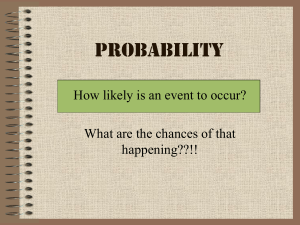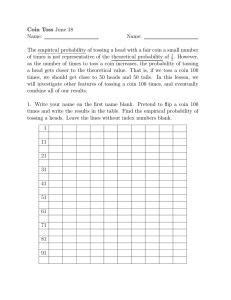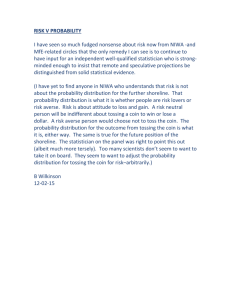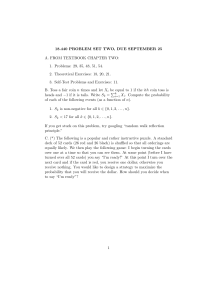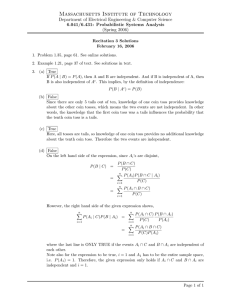RANDOM VARIABLES Random Processes
advertisement
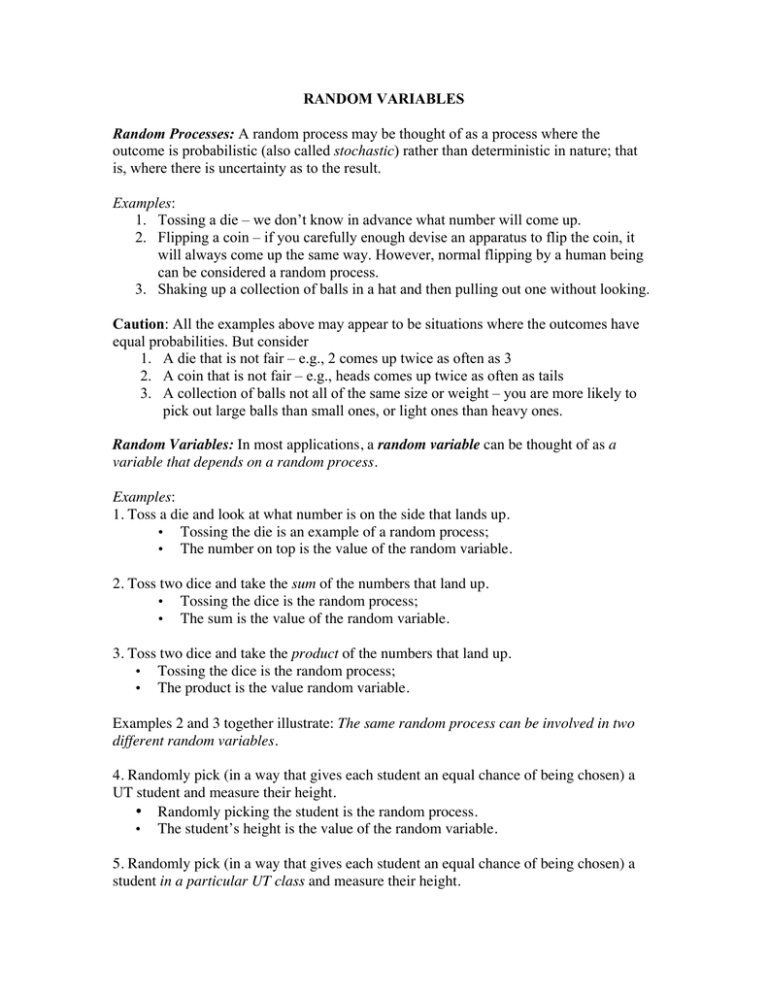
RANDOM VARIABLES Random Processes: A random process may be thought of as a process where the outcome is probabilistic (also called stochastic) rather than deterministic in nature; that is, where there is uncertainty as to the result. Examples: 1. Tossing a die – we don’t know in advance what number will come up. 2. Flipping a coin – if you carefully enough devise an apparatus to flip the coin, it will always come up the same way. However, normal flipping by a human being can be considered a random process. 3. Shaking up a collection of balls in a hat and then pulling out one without looking. Caution: All the examples above may appear to be situations where the outcomes have equal probabilities. But consider 1. A die that is not fair – e.g., 2 comes up twice as often as 3 2. A coin that is not fair – e.g., heads comes up twice as often as tails 3. A collection of balls not all of the same size or weight – you are more likely to pick out large balls than small ones, or light ones than heavy ones. Random Variables: In most applications, a random variable can be thought of as a variable that depends on a random process. Examples: 1. Toss a die and look at what number is on the side that lands up. • Tossing the die is an example of a random process; • The number on top is the value of the random variable. 2. Toss two dice and take the sum of the numbers that land up. • Tossing the dice is the random process; • The sum is the value of the random variable. 3. Toss two dice and take the product of the numbers that land up. • Tossing the dice is the random process; • The product is the value random variable. Examples 2 and 3 together illustrate: The same random process can be involved in two different random variables. 4. Randomly pick (in a way that gives each student an equal chance of being chosen) a UT student and measure their height. • Randomly picking the student is the random process. • The student’s height is the value of the random variable. 5. Randomly pick (in a way that gives each student an equal chance of being chosen) a student in a particular UT class and measure their height. • • Picking the student is the random process. The student’s height is the value of the random variable. Examples 4 and 5 illustrate: Using the same variable (in this case, height) but different random processes (in this case, choosing from different populations) gives different random variables. Confusing two random variables with the same variable but different random processes is a common mistake. 6. Measure the height of the third student who walks into the class in Example 5. • In all the examples before this one, the random process was done deliberately. • In Example 6, the random process is one that occurs naturally. • Because Examples 5 and 6 depend on different random processes, they are different random variables. 7. Toss a coin and see whether it comes up heads or tails. • Tossing the coin is the random process. • The value is heads or tails. • Example 7 shows that a random variable doesn't necessarily have to take on numerical values. Probability Distributions: For random variables, probability enters as a probability distribution: • Typically, some values (or ranges of values) of a random variable occur more frequently than others. • For example, if we are talking about heights of university students, heights of around 5' 7" are much more common that heights of around 4' or heights around 7'. • In other words, some values of the random variable occur with higher probability than others. • This can be represented graphically by the probability distribution of the random variable. Example: • • • • • The possible values for the random variable are along the horizontal axis. The height of the curve above a possible value roughly tells how likely the nearby values are. This particular distribution tells us that values of the random variable around 2 (where the curve is highest) are most common, and values greater than 2 become increasingly less common, with values greater than 14 (where the curve is lowest) very uncommon. More precisely, the area under the curve between two values a and b is the probability that the random variable will take on values between a and b. In this example, we can see that the value of the random variable is much more likely to lie between 2 and 4 (where the curve is high, hence has a lot of area under it) than between 12 and 14 (where the curve is low, and hence has little area under it).

